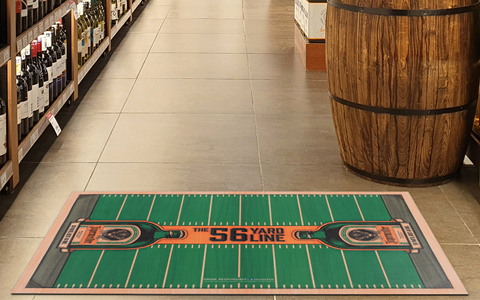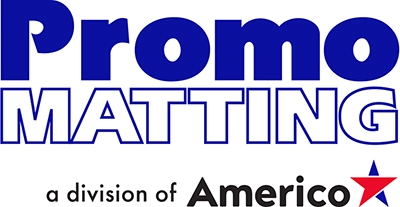
Custom promotional mat used in a retail setting for brand exposure.
In today’s competitive business landscape, companies are constantly seeking innovative ways to enhance their marketing and branding initiatives while maximizing return on investment (ROI). One often overlooked yet highly effective tool in this regard is promotional floor mats. While they may seem like a simple addition to a marketing strategy, promotional floor mats can offer significant value in terms of brand impressions, lead generation, and customer engagement. In this blog post, we’ll delve into the key metrics for measuring the ROI of promotional floor mats and explore real-world examples of how businesses have achieved tangible results with their campaigns.
The Power of Brand Impressions
Brand impressions refer to the number of times consumers are exposed to a brand’s message or logo. Promotional floor mats placed strategically in high-traffic areas can generate thousands of impressions daily. Whether it’s at the entrance of a retail store, in a corporate lobby, or at a trade show booth, these mats catch the attention of passersby and leave a lasting impression. For businesses, each impression represents an opportunity to increase brand awareness and recognition.
Consider the case of a retail store that invests in branded floor mats at its entrance. Every customer who enters the store steps on the mat, seeing the logo or message prominently displayed. Over time, as foot traffic increases, the number of brand impressions grows exponentially. This continuous exposure helps reinforce brand recall and may influence purchasing decisions down the line.
Lead Generation and Conversion
Promotional floor mats can also serve as a powerful tool for lead generation. By incorporating a call-to-action or promotional offer on the mat, businesses can encourage customers to engage further with their brand. For example, a restaurant might print a QR code on their floor mat, directing customers to sign up for a loyalty program or receive a discount on their next visit. Similarly, a trade show exhibitor might offer a free consultation or product demo to visitors who interact with their branded mat.
One company that saw significant success with this approach is a real estate agency that used promotional floor mats at local home expos. By inviting attendees to step on the mat for a chance to win a free home valuation, they were able to capture leads and initiate meaningful conversations with potential clients. As a result, they saw a notable increase in inquiries and ultimately closed several new deals directly attributed to their floor mat campaign.
Enhancing Customer Engagement
In addition to generating leads, promotional floor mats can enhance customer engagement and interaction. Interactive elements such as games, quizzes, or augmented reality experiences can turn a simple floor mat into an immersive brand experience. By incorporating these elements, businesses can create memorable moments that leave a lasting impact on customers.
A prime example of this is a sports apparel retailer that installed interactive floor mats in their stores. These mats featured virtual basketball hoops or soccer goals that customers could “shoot” at using their smartphones. Not only did this encourage physical activity in-store, but it also fostered a sense of fun and excitement around the brand. As customers engaged with the interactive mats, they were more likely to spend time in the store and explore the merchandise, ultimately leading to increased sales.
Measuring ROI: Key Metrics and Tools
Now that we’ve explored the potential benefits of promotional floor mats, how can businesses measure the ROI of their campaigns? Several key metrics and tools can help quantify the impact of promotional floor mats on marketing and branding initiatives:
- Brand Impressions: Utilize foot traffic data and impression tracking tools to estimate the number of views your promotional floor mat receives daily, weekly, or monthly.
- Lead Generation: Track the number of leads generated through specific call-to-action mechanisms on the floor mat, such as QR codes, URLs, or unique promo codes.
- Customer Engagement: Monitor engagement metrics such as time spent interacting with interactive floor mats, social media shares or mentions related to the campaign, and customer feedback or reviews.
- Sales Lift: Analyze sales data before, during, and after the promotional floor mat campaign to assess any increase in sales or conversion rates associated with the campaign.
By collecting and analyzing these metrics, businesses can gain valuable insights into the effectiveness of their promotional floor mat campaigns and calculate the corresponding ROI.
Conclusion
Promotional floor mats may seem like a small detail in a marketing strategy, but their potential impact should not be underestimated. From increasing brand impressions and generating leads to enhancing customer engagement, promotional floor mats offer a versatile and cost-effective way to elevate marketing and branding initiatives. By measuring key metrics such as brand impressions, lead generation, and customer engagement, businesses can effectively assess the ROI of their promotional floor mat campaigns and optimize future strategies accordingly. As demonstrated by real-world examples, the value of promotional floor mats extends far beyond their physical presence, making them a valuable asset in any marketing arsenal.

